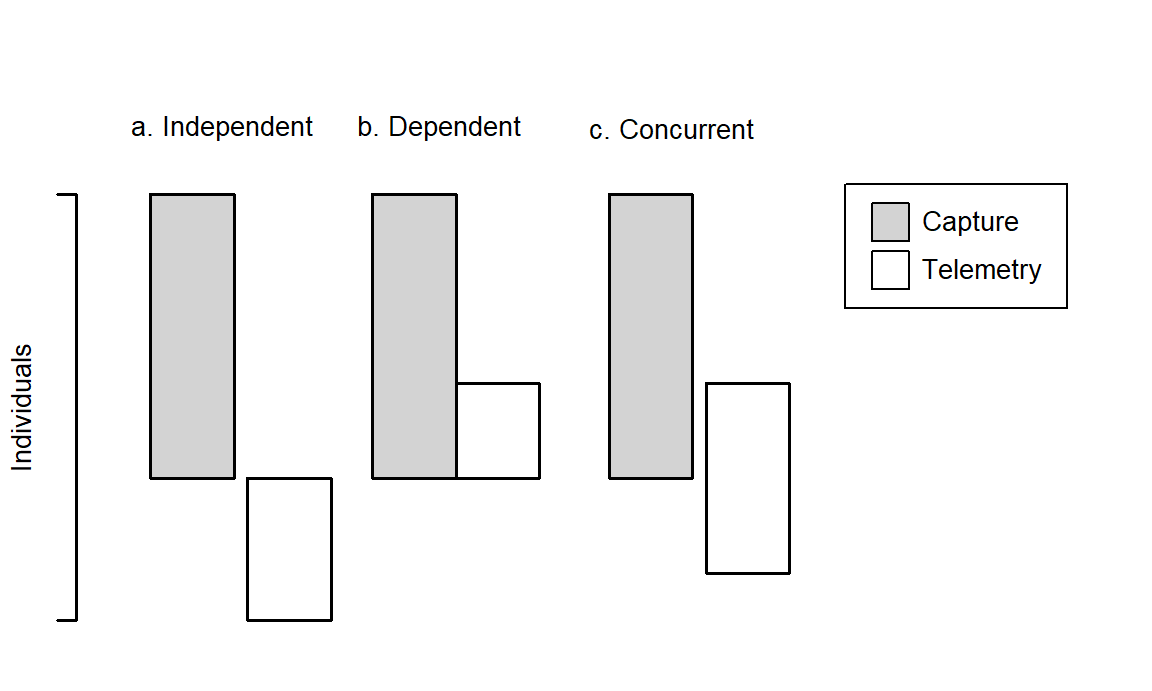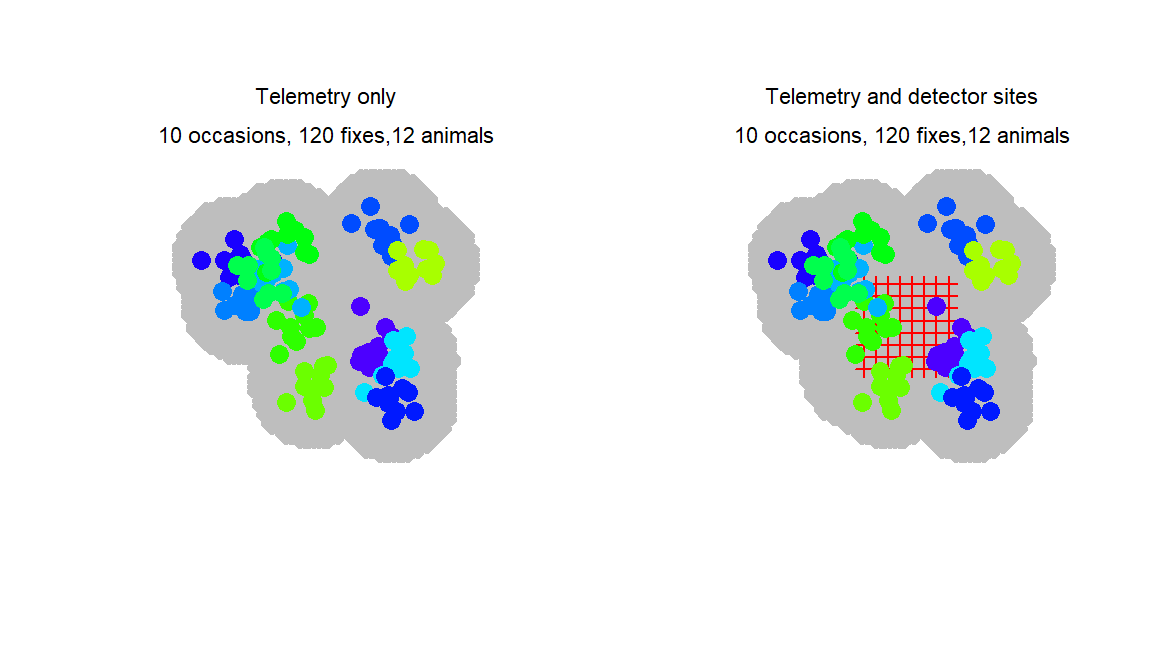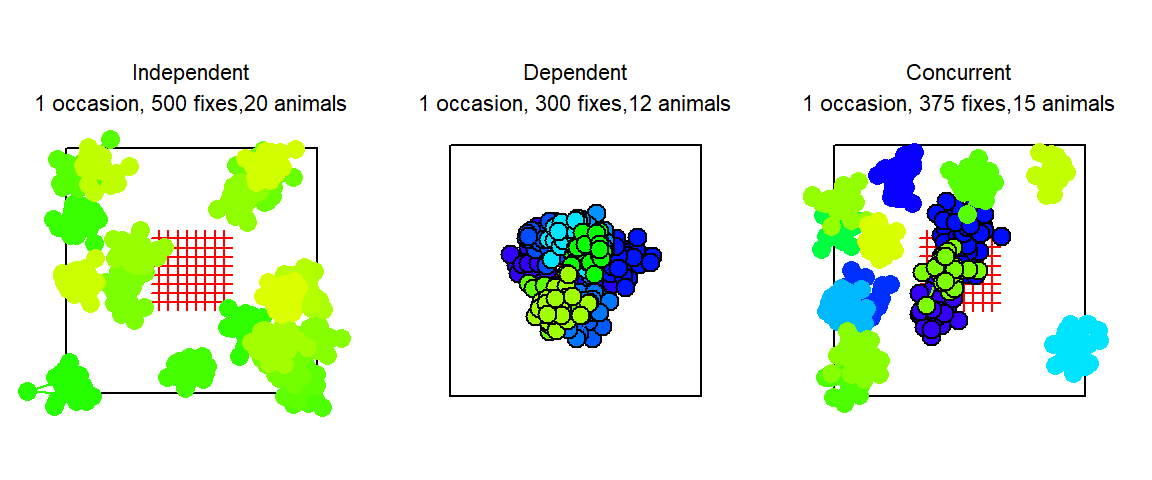Calhoun, J. B., & Casby, J. U. (1958). Calculation of home range and density of small mammals. Public Health Monograph, 55.
Chandler, R. B., Crawford, D. A., Garrison, E. P., Miller, K. V., & Cherry, M. J. (2021). Modeling abundance, distribution, movement and space use with camera and telemetry data.
Ecology,
103(10).
https://doi.org/10.1002/ecy.3583
Gopalaswamy, A. M., Royle, J. A., Delampady, M., Nichols, J. D., Karanth, K. U., & Macdonald, D. W. (2012). Density estimation in tiger populations: Combining information for strong inference.
Ecology,
93(7), 1741–1751.
https://doi.org/10.1890/11-2110.1
Kendeigh, S. C. (1944). Measurement of bird populations.
Ecological Monographs,
14, 67–106.
https://doi.org/10.2307/1961632
Linden, D. W., Sirén, A. P. K., & Pekins, P. J. (2018). Integrating telemetry data into spatial capture–recapture modifies inferences on multi‐scale resource selection.
Ecosphere,
9(4).
https://doi.org/10.1002/ecs2.2203
Margenau, L. L. S., Cherry, M. J., Miller, K. V., Garrison, E. P., & Chandler, R. B. (2022). Monitoring partially marked populations using camera and telemetry data.
Ecological Applications,
32(4).
https://doi.org/10.1002/eap.2553
Ruprecht, J. S., Eriksson, C. E., Forrester, T. D., Clark, D. A., Wisdom, M. J., Rowland, M. M., Johnson, B. K., & Levi, T. (2021). Evaluating and integrating spatial capture–recapture models with data of variable individual identifiability.
Ecological Applications,
31(7).
https://doi.org/10.1002/eap.2405
Sollmann, R., Gardner, B., Parsons, A. W., Stocking, J. J., McClintock, B. T., Simons, T. R., Pollock, K. H., & O’Connell, A. F. (2013). A spatial mark-resight model augmented with telemetry data. Ecology, 94, 553–559.
Whittington, J., Hebblewhite, M., & Chandler, R. (2018). Generalized spatial mark-resight models with an application to grizzly bears. Journal of Applied Ecology, 55, 157–168.



